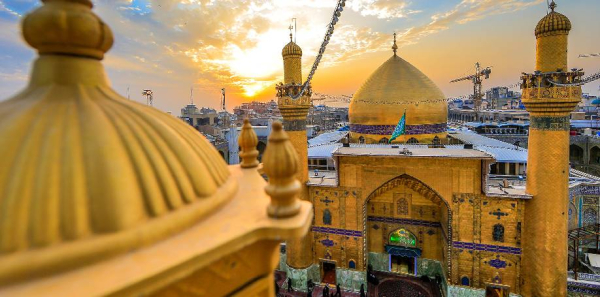eginning today, we would be broadcasting 40-plus episodes on a daily basis, of a new and interesting series titled “Muharram Mourning Traditions in Different Lands”, to commemorate the heartrending tragedy of Karbala, and the martyrdom of Imam Husain (AS), the grandson of Prophet Mohammad (SAWA).
Muharram is the first month of the lunar calendar, and is one of the four sacred months in Islam. The name Muharram originates from the fact that before the advent of Islam, even pagan Arabs considered it forbidden to fight during this and the other three sacred months of the year, that is, Rajab, Zilqa’dah, and Zilhijja. It was “haraam” or forbidden to fight (or to wage a war); hence the name “Muharram” was chosen for this month. This makes it even more ironic that history’s most bloodcurdling tragedy, that is the Battle of Karbala, and the massacre of male members of the Prophet of Islam’s Household, was perpetrated during the month of Muharram on the orders of the Godless Yazid ibn Mu’waiyyah the self-styled caliph of the usurper Omayyad regime.
The Prophet’s 8th Infallible Successor, Imam Ali ar-Reza (AS), once made a very interesting and poignant remark about the month of Muharram. He said: Before Islam, during the period of Jahiliyya, even the pagan Arabs respected the sanctity of the month of Muharram, and never fought during this month, but in this very month, their supposedly Muslim offspring, spilled our blood, showed us disrespect, trampled our dignity, set fire to our tents, looted them, and took as captive the noblewomen and children of the blessed Household of Prophet Mohammad (SAWA).”
The month of Muharram is a reminder of the tragic events of Ashura or the fateful 10th of Muharram on the plain of Karbala in Iraq in the year 61 AH, corresponding to 680 AD, when Imam Husain (AS) preferred death in combat, rather than submit to the illegal demand of the Omayyad regime for oath of allegiance to the ungodly rule of the libertine Yazid. Ashura is “as big as Planet Earth”. What we mean is that with the arrival of Muharram, the faithful Muslims, the followers of the Chief of Martyrs, Imam Husain (AS) hold mourning ceremonies and take out mourning processions on the streets, wherever they happen to be in the world. In all corners of the globe, mourning processions are held for Imam Husain, his Household, kin and loyal companions who gladly sacrificed their life in order to safeguard Islam and humanitarian values.
The following questions obviously come to mind. Why is it that the passage of time, has not consigned to oblivion, the event of Ashura?!? Well over a thousand years and three centuries have passed since this tragic and sorrowful event occurred on the plain of Karbala, but the passage of time has not erased or even blurred the memory of this tragedy in the minds of Muslims and all those who love the pure and blessed Household of Prophet Mohammad (SAWA).What is it about Imam Husain (AS) and his movement which has so deeply absorbed and affected the seekers of freedom, justice and humanitarian values?
All of us should ponder and get to know the life and teachings of Imam Husain (AS) – the initiator of the movement for justice, a movement for enjoining what is good and abstaining from what is forbidden and prohibited; a movement which is still going from strength to strength, over 1377 years after it was started by the grandson of the Almighty’s Last and Greatest Prophet.
The culture of the followers of the Prophet’s Immaculate Ahl al-Bayt, also known as Shi’a Muslims, is deeply intertwined with the uprising of Imam Husain (AS).
As the mourning month of Muharram approaches, in virtually every city, town or village in the Islamic Republic of Iran, and in much of the world where Muslims live, a sorrowful mood is quite perceptible, and people prepare themselves for mourning ceremonies. Mosques and Husseiniyehs, and various groups and processions prepare themselves for the advent of Muharram.
Throughout the lands where Muslims are found, and where communities of Shi’a Muslims thrive, each region has its own customs and traditions as it prepares for mourning during Muharram and the subsequent month of Safar. In the Islamic Republic of Iran, men women and children, young and old, clean and adorn all religious buildings, such as Mosques and Husseiniyehs, draping them black from top to bottom, in preparation for mourning of Muharram. People from all walks of life and all age groups take part in these preparations enthusiastically, and one often sees black flags


















